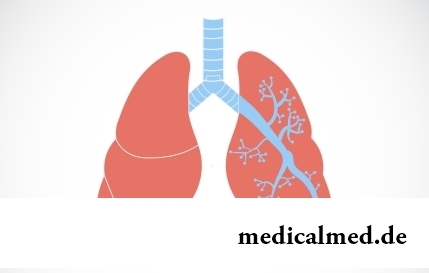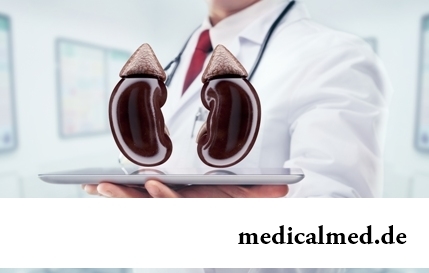





Pro-max.
Application instruction:
Pro-max. – the anesthetizing, febrifugal, antiagregantny drug of group of non-steroidal anti-inflammatory drugs (NPVS); reduces expressiveness or eliminates a pain syndrome (including joint rest pains and the movements), reduces morning constraint and a turgidity of joints, increasing the volume of movements.
Form of release and structure
Dosage form of Promaks – a tablet, film coated: white color, kapsulopodobny, on one of the parties a print of "H1" (on 10 pieces in blisters from PVC and aluminum foil, in a cardboard pack on 1 blister).
Structure of 1 tablet:
- Active ingredient: sodium Naproxenum – 275 or 550 mg (that corresponds to 250 or 500 mg of Naproxenum);
- Auxiliary components: sodium lauryl sulfate, magnesium stearate, sodium of a kroskarmelloz, povidone, silicon dioxide colloid, the vegetable oil hydrogenated an emulsion of a simetikon, cellulose microcrystallic, copolymer of methacrylic acid, a gidroksipropilmetiltsellyuloz, lactose, the talc purified titanium dioxide.
Indications to use
- Pain syndrome easy and moderately severe: a dysmenorrhea, disturbances from a musculoskeletal system (backbone pain, joint and muscular pains), tooth and a headache;
- Rheumatic diseases: an osteoarthritis, the pseudorheumatism ankylosing a spondylarthritis.
Contraindications
- Digestive tract erosive cankers in an aggravation phase;
- Hemopoiesis disturbances;
- Expressed hepatic (the clearance of creatinine (CC) less than 20 ml/min.) and a renal failure;
- Heart failure;
- Pregnancy (ІІІ trimester) and breastfeeding period;
- Children's and teenage age up to 16 years;
- The increased individual sensitivity to salicylates and other NPVS (including rhinitis, an asthmatic syndrome, nasal cavity polyps, a small tortoiseshell);
- Hypersensitivity to Naproxenum and other components of Promaks.
With care, in a minimal effective dose drug is accepted at a renal and liver failure of moderate and weak severity, at advanced age, and also in I and II trimesters of pregnancy.
Route of administration and dosage
Pill is taken inside after meal.
The following mode of dosing of Promaks is recommended:
- Anesthetic: an initial dose – 500 mg, then 250 mg each 6-8 h as required; the maximum daily dose – 1500 mg;
- Antirheumatic: a daily dose – it it is possible to increase 500-1000 mg divided into 2 receptions in case of the expressed exacerbation of a rheumatic disease to 1500 mg (by a limited span); the maximum daily dose – 1750 mg.
Duration of treatment of arthritis – 2 weeks, but before achievement of the maximum result can continuously be necessary to accept Naproxenum from 2 to 4 weeks.
Without medical consultation and observation of the patient duration of a course of therapy by Promaks should not exceed 3 days.
Side effects
At observance of the recommended dosing mode Naproxenum is transferred well.
Most often, owing to reception of high doses of drug and/or the long period of therapy, there can be following side reactions:
- Digestive Tract (DT): nausea, heartburn, vomiting, diarrhea, lock, dyspepsia, meteorism, abdominal pain, perforation of a stomach and/or gastric bleedings, melena, hematemesis, stomatitis (including ulcer), exacerbation of ulcer colitis and disease Krone, stomach ulcer, gastritis, esophagitis, pancreatitis;
- System of blood and lymphatic system: thrombocytopenia, neutropenia, granulocytopenia, leukopenia, eosinophilia, aplastic and hemolitic anemias;
- Immune system: hypersensitivity reactions (Quincke's disease, bronchospasm);
- Metabolism, metabolism: hyperpotassemia;
- Frustration of mentality: sleep disorders, sleeplessness, depression, confusion of consciousness, hallucination;
- Central and peripheral nervous system: paresthesias, spasms, вертиго, drowsiness, a headache, a retrobulbar optic neuritis, disturbance of concentration of attention, cognitive frustration, the aseptic meningitis (in particular at patients with data in the anamnesis on autoimmune diseases, for example, such as Sharp's syndrome (the mixed diseases of connecting fabric) and a system lupus erythematosus) which is followed by a stiff neck, the headache raised by the body temperature, a disorientation;
- Organ of sight: opacification of a cornea, vision disorder, papilloedem (papilledema), papillitis;
- Acoustic organ: sonitus, hearing disorder;
- Cardiovascular system: heart consciousness, hypostases, heart failure, arterial hypertension (AH), vasculitis, slight increase of risk of arterial thrombosis (myocardial infarction or stroke);
- Respiratory system: short wind, eosinophilic pneumonia, asthma, fluid lungs;
- Gepatobiliarny system: increase in level of liver enzymes, jaundice;
- Skin and hypodermic cellulose: the alopecia, skin rash, an itch, a small tortoiseshell, a purpura, bruises, a hyperhidrosis, a polymorphic erythema, a malignant exudative erythema, an epidermal necrolysis, a system lupus erythematosus and reactions of a photosensitivity similar symptoms with a chronic hematoporphyria and a violent epidermolysis;
- Musculoskeletal system and connecting fabric: weakness in muscles and muscular pain;
- Urinary system: intersticial nephrite, glomerulonephritis, nephrotic syndrome, necrotic papillitis, renal failure, hamaturia;
- Reproductive system: female infertility;
- General disturbances: fever, thirst, fatigue, indisposition.
In case of heavy side reactions therapy should be stopped immediately.
Symptoms of overdose are: heartburn, abdominal pain, nausea, vomiting, gastrointestinal bleedings, headache; seldom – a disorientation, irritability, dizziness, drowsiness, a sonitus, diarrhea; in more difficult cases – a melena, a hematemesis, disorder of consciousness, disturbance of breath, a spasm, a renal failure.
For therapy of a state the gastric lavage, reception of absorbent carbon, a mizoprostol, antiacid drugs, inhibitors of the proton pump, H2 receptors inhibitors, other types of a symptomatic treatment is recommended.
Special instructions
In case of existence of an infectious disease it is necessary to consider febrifugal and antiinflammatory action of Naproxenum since they can mask symptomatology of inflammatory process.
If the analysis of concentration of 17 ketosteroids is necessary, it is required to stop reception of Naproxenum at least for 48 h prior to a research.
Promaks's reception should be stopped, at least, for 48 h prior to the planned serious surgery and in case of existence of considerable fresh wounds.
The patients with a porphyria and/or epilepsy accepting Naproxenum have to be under fixed medical observation.
1 tablet of Promaks of 500 mg contains 50 mg of sodium, Promaksa of 250 mg – 25 mg of sodium that surely should be considered at observance by the patient of an electrolyte-deficient diet.
During the work with difficult mechanisms and control of vehicles it is required to be careful as it is impossible to exclude possible side reactions from Promaks's reception, such as drowsiness, dizziness, disturbance of concentration of attention, etc.
Medicinal interaction
- Furosemide – decrease in its diuretic effect is possible;
- Acetylsalicylic acid, other NPVS and analgetics (including the selection blockers of TsOG-2) – increases risk of emergence of side effects;
- Indirect anticoagulants – their action amplifies;
- Antiacid drugs with the content of aluminum and magnesium – reduce absorption of Naproxenum;
- Probenetsid – raises concentration in a blood plasma of Naproxenum and its T1/2 increases;
- Derivatives of hydantoin or sulphonylurea (the drugs contacting proteins of a blood plasma) – compete with Naproxenum for communication with proteins (it is necessary to apply together with with care);
- The methotrexate – decreases its tubular removal that can increase toxicity of a methotrexate;
- Cyclosporine, inhibitors of an angiotensin-converting enzyme (APF) – increase in risk of a renal failure is possible;
- The zidovudine (according to the research in vitro) – raises its concentration in a blood plasma;
- Takrolimus – nephrotoxicity development is possible;
- Mifepristone – Naproxenum, as well as other NPVS, can reduce its efficiency (it is necessary to observe an interval of 8-12 days after mifepristone reception).
Terms and storage conditions
To store at a temperature up to 25 °C. To protect from children.
Period of validity – 3 years.
More than 500 million dollars a year are spent for allergy medicine only in the USA. All of you still believe that the way to finally win against an allergy will be found?

Any of us is not insured from a heavy illness of the loved one. Happens and so that someone from family members becomes lying бо...
Section: Articles about health
The fatigue, sleep debt, disturbances of food, bad mood, vagaries of the weather – all these circumstances badly affect our appearance. Especially the person suffers: skin becomes flabby, loses healthy color, becomes covered by wrinkles, zones of hypostases and t appear...
Section: Articles about health
Sugar - the digestible refined product which is not of special value for an organism of the modern person. The use of sugar in food is based rather on the psychological dependence caused by desire to indulge itself with something tasty, and further and the biological, caused need of an organism for glucose as a result of big emissions of insulin in blood. Such circulation of insulin and glucose with continuous increase in portions of sugar is rather offensive and can become the reason for a narusha...
Section: Articles about health
Maternal milk is the best food for the newborn. It is the unique natural product containing optimum set...
Section: Articles about health
Health and attractiveness - eternal values, pursuing which people often use the most unusual ingredients and technicians. Let's consider 11 most exotic and sometimes not most pleasant Spa procedures to which the person in a pursuit for beauty agrees...
Section: Articles about health
Dietary supplements (dietary supplements) for the last decades were so thoroughly included into our life that, apparently, it is already impossible to find the person who at least once did not try them. At the same time, most of our compatriots have a vague idea of what dietary supplements as they affect a human body consist of and what differ from the real medicines in. Let's try to understand these questions, and at the same time and to understand, such additives are how necessary for us....
Section: Articles about health
Many parents of children at the age of 2-4 years face excessively whimsical behavior of the child. The kid exhausts constant crying...
Section: Slideshow
Bathing in broths of medical flowers and plants (phytobathtub) was eurysynusic since Cleopatra who is a good judge in all that concerns beauty and health. And today phytobathtubs is the simple and available means allowing not only to remove nervous N...
Section: Articles about health
A lot of things depend on a condition of a backbone in a human body, a backbone - not only a support for a body, it also a receptacle for a spinal cord, that is why malfunctions with a backbone are so dangerous. To treat rachis diseases very difficult and long, it is much simpler and more correct not to bring to a disease. Conforming to the rules provided in this article it is possible to avoid the majority of the problems connected with a backbone including those which are considered to be age, but a cat...
Section: Articles about health
They say that to ensure health and longevity of people it is obliged. Really, at competent approach to these questions, we will pass...
Section: Articles about health
The person, as well as all other beings living on our planet feels weather changing. It is the normal meteosensitivity which is not causing to healthy people of special troubles. Meteodependence, on the contrary, is morbid condition, характеризующимс...
Section: Articles about health
Is told about advantage of domestic animals for development of the child much. But many parents nevertheless do not hurry to bring pets as are afraid that they can do harm to health of children. What troubles can really trap kids and how to make joint life of a family and domestic animals comfortable and safe?...
Section: Articles about health
Venereal diseases in medicine are called the infections which are transmitted preferential sexually, now they are so...
Section: Articles about health
Kidneys perform the most important function of clarification of blood from those products of metabolic processes which cannot be used by an organism for obtaining energy and construction of new cells. With the urine produced by kidneys from a body of the person bulk is removed...
Section: Articles about health
Good appetite was always considered as a sign of good health. The correct operation of the mechanism which is responsible for the need for nutrients and receiving pleasure from process of its satisfaction demonstrates that the organism functions without special deviations. On the other hand, appetite of the person is not a constant. It depends on the culture of food, flavoring addictions imparted since the childhood which can change during life, weather, mood and many д more than once...
Section: Articles about health
Energy saving lamps are one of the most popular products of innovative technologies, and there is no wonder: they much эк...
Section: Articles about health
Visit of doctors – business not the most pleasant, and many people do not hurry to undergo necessary planned inspections. Such behavior is extremely thoughtless and improvident. Our health is necessary not only to us: wellbeing of darlings, children, grandsons and престар...
Section: Articles about health
Life expectancy in various regions of Earth is not identical. Social stability, economic wellbeing, availability and level of medical care, household comfort, literacy of the population in the field of respect for sanitary and hygienic norms and many other factors exert impact on it. However one parameter remains to the general almost for all countries of the world: women on average live for 7-10 years longer, than men. Today we will talk about the reasons of this phenomenon....
Section: Articles about health
Life activity of one-celled fungi of the sort Candida is a proximate cause of development of candidiasis (milkwoman), it is related...
Section: Articles about health
Partial and the more so full loss of hearing significantly reduces quality of life. Difficulties with communication lead to loneliness and isolation. The person who badly hears experiences difficulties with social and professional implementation, quite often has problems in...
Section: Articles about health
It is difficult to revaluate importance of kidneys for an organism. These bodies not only perform work on purification of blood of decomposition products and removal of excess liquid. They are responsible also for production of some hormones necessary for maintenance of a normality of a bone tissue, and also for a producing red blood cells – erythrocytes....
Section: Articles about health
The phenomenon of the panic attack is known long ago, but the reasons of its emergence still are up to the end not found out. It is established that more than 30%...
Section: Articles about health
The stroke is one of the most widespread diseases of the person, annually in the world about 6 million cases of this pathology are registered. According to medical statistics, strokes occur almost three times more often than myocardial infarctions. Disease otno...
Section: Articles about health
Life of the modern child is extremely active and difficult. Information strain which is experienced by the school student and did not dream pupils of last times. Careful parents, wishing well to the children, will organize a set of additional classes in circles, sports sections and music schools. In such situation the child needs continuous care and good nutrition to keep health and high performance....
Section: Articles about health
Women quite often suffer from complexes concerning the sizes of the bust. Strangely enough, reason душевног...
Section: Articles about health
Heart disease and blood vessels lead to disturbance of blood supply of bodies and fabrics that involves failures in their work, deterioration in health of the person, decrease in its working capacity and standard of living. Annually such perishes from pathologies more...
Section: Articles about health
Each person has easy indispositions which he transfers "standing", trying not to ask for medical care. Arguments at the same time are adduced same: "it is a trifle, itself will pass", "I have too many important issues", "there are no wish to spend time for doctors", etc. At good shape of health, normal working capacity and lack of suspiciousness dislike for complaints to such problems is quite natural. It is not the most correct, but very widespread type of behavior. I am glad...
Section: Articles about health
